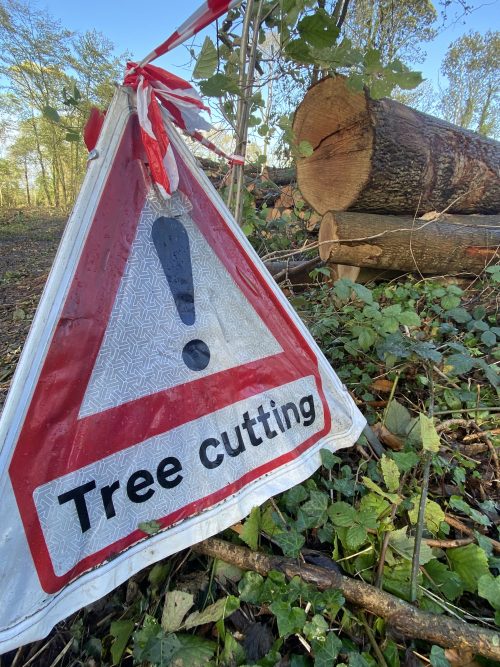 https://www.wilsontreesurgery.com/wp-content/uploads/2024/09/AdobeStock_475873508-500x333.jpeg
https://www.wilsontreesurgery.com/wp-content/uploads/2024/09/AdobeStock_475873508-500x333.jpeg
Tree Surgery on Protected Sites
Read more
by Wilson Tree Surgery |
Utility arboriculture is a specialised branch of arboriculture that focuses on the management of trees and vegetation around utility infrastructure, such as power lines, pipelines, and telecommunications networks. This work is critical for maintaining the safety and reliability of utility services, as trees and overgrown vegetation can pose significant hazards, including power outages, fires, and physical damage to infrastructure. To carry out this work effectively and safely, utility arborists rely on a range of specialised machinery and equipment. In this blog, we’ll explore the key machinery used in utility arboriculture and their roles in ensuring the safety and efficiency of vegetation management around utility lines.
Mobile Elevated Work Platforms (MEWPs), commonly known as cherry pickers, are among the most essential pieces of equipment in utility arboriculture. These vehicles are equipped with extendable hydraulic arms and buckets that allow arborists to safely access and work on trees at height. Aerial lift trucks are particularly useful for pruning, trimming, or removing branches that are close to power lines or other utility infrastructure.
Wood chippers are a staple in the arboriculture industry, used to process the branches, limbs, and trunks that are removed during tree trimming or removal operations. For utility arboriculture, where large volumes of tree material need to be quickly and efficiently managed, wood chippers are indispensable.
After a tree is removed, especially when it’s too close to utility lines or infrastructure, the stump may need to be ground down to prevent regrowth or potential hazards. Stump grinders are specialised machines equipped with a rotating cutting disc that chips away at the tree stump until it is below ground level.
For large-scale tree clearing operations, particularly in utility right-of-ways or corridors, hydraulic tree shears can be highly effective. These machines are designed to cut through trees and large branches with minimal effort and are often mounted on excavators or skid steers.
Brush cutters and mulchers are essential for managing dense undergrowth, small trees, and brush in utility corridors. These machines, which can be mounted on tractors, skid steers, or excavators, are used to quickly clear vegetation that may impede access or pose a fire risk.
Forestry mowers and mulching heads are designed for more intensive vegetation management tasks. Mounted on heavy machinery like excavators or tractors, these attachments can grind down trees, shrubs, and vegetation into mulch.
While heavy machinery is essential for large-scale operations, chainsaws and pole saws remain critical tools for precision work in utility arboriculture. Chainsaws are versatile, handheld machines used for cutting branches, limbs, and trunks, while pole saws extend the reach of the operator to safely prune branches from the ground.
Skid steers are versatile machines that can be fitted with a variety of attachments to aid in utility arboriculture tasks. Some common attachments include grapple buckets, tree spades, and stump grinders.
For particularly large or hazardous trees located near utility lines, cranes may be used in conjunction with rigging equipment to safely remove sections of a tree piece by piece. This method is especially useful in urban or confined environments where safety is paramount.
Utility arboriculture is a complex field that requires specialised machinery and skilled operators to safely manage vegetation around power lines, pipelines, and other utility infrastructure. Each piece of equipment plays a critical role in ensuring the safety and reliability of utility services. At the same time, the effective use of these machines helps maintain the health of surrounding ecosystems, prevent outages, and reduce fire risks. With the right tools and expertise, utility arborists can navigate the challenges of vegetation management with precision, efficiency, and safety.
 https://www.wilsontreesurgery.com/wp-content/uploads/2024/09/AdobeStock_475873508-500x333.jpeg
https://www.wilsontreesurgery.com/wp-content/uploads/2024/09/AdobeStock_475873508-500x333.jpeg
Read more
 https://www.wilsontreesurgery.com/wp-content/uploads/2024/09/pexels-valiphotos-589802-500x333.jpg
https://www.wilsontreesurgery.com/wp-content/uploads/2024/09/pexels-valiphotos-589802-500x333.jpg
Read more
 https://www.wilsontreesurgery.com/wp-content/uploads/2024/08/IMG_1874-500x667.jpg
https://www.wilsontreesurgery.com/wp-content/uploads/2024/08/IMG_1874-500x667.jpg
Read more